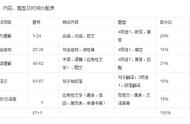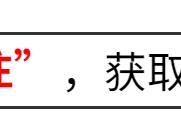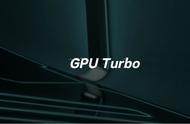1、时态综述
英语得时态虽多,但你要理解三点,就是能掌握基本用法
时(时间)态(状态)
1、事件是什么时候发生的?
2、你是什么时候谈起这件事的?
3、事件处于什么状态?完成了吗?在进行吗?
一般现在时:
通常用来描述一件不怎么受时间影响的事
现在进行时:
通常表明,说话这一刻事情正在进行还没有结束
现在完成时:
说明从过去的某一时刻开始,直到现在,事情一直在发生
过去进行时:
说明在过去的某一时刻,事情正在进行,还没结束
一般过去时:
说明在说话的那一刻,事情早已结束
一般将来时:
表明在说话这一刻,事情还没结束
英语的心脏——谓语动词
I had breakfast just now.
我刚吃过早饭。(过去)
I am having breakfast now.
我现在正在吃早饭。(现在)
I will have breakfast soon.
我等会儿将要吃早饭。(将来)
时间方式
现在
过去
将来
过去将来
一般
do/dose
did
will do/
be going
to do
would do或 was/
were 现在分词(仅限位移动词)
进行
be doing
was/were
doing
will be
doing
would be doing
完成
have/
has done
had done
will have done
would
have done
完成
进行
have/
has been doing
had been done
will have
been doing
would
have
been
doing
2、时态的媒介
时态的媒介:助动词
助动词用来构成时态和语态,也可构成疑问句和否定句不可单独作谓语。
e.g. He doesn't like English.他不喜欢英语。
does是助动词,无词义
like是主要动词,有词义
助动词分类
do类:do, does, did
have类:have, has, had
be类:am, is, are, was, were, being, been
ll类:will(would), shall(should)
3、常考时态
专升本考生只需掌握其中12种时态的结构及用法即可
图片
主要考察以下时态
1、一般现在时
结构:do/does/am/is/are
定义和标志词
经常性、习惯性动词:
always,usually,sometimes,never,twice a week
属性特征客观真理:
The sun rises from the east.
安排或计划好动作(时刻表)
常见的动词be,arrive,come,go,start,begin,leave,return,end,stop等
条件和时间状语从句中(现在表将来)
常考:主将/祈/情,从现
在时间/条件状语从句中,主语为一般将来时/祈使句/含情态动词,从句用一般现在时
*常考连词
时间状语从句:when,until/till,before,as soon as,the moment,once
条件状语从句:if,in case,unless
2、一般过去时
结构:主语 动词的过去式(did)
标志性时间状语有
two months ago …以前
a moment/three days ago片刻/三天前
last week/year 上周/去年
In 1949 在1949年
(the day before)yesterday 昨天
just now 刚刚
at that time/moment在那时
3、一般将来时
主语
will/shall do
be going to do(be=am/is/are计划,打算)
be (about) to do
be doing(仅限于位移动词)如come来、go去、leave离开、arrive到达
注意:be on the point of doing正要/即将
考点一:与将来的时间状语连用
soon 不久之后
in 一段时间(回答How soon……?提问)
tomorrow 明天
next week/year下周/明年
in the future在未来
考点二:祈使句 and/or 主语 will do
这种句型真中,祈使句部分表条件
and表顺承:这样的话
or表转折:否则
4、现在进行时
定义:现在或现阶段正在进行的动作或状态
结构:am/is/are 现在分词(doing)
考点:always,forever,constantly与现在进行时连用表喜爱或厌恶等情感
注意下列动词(短语)不能用于进行时态
表示感情状态
love,enjoy,like,hate,resent等
表示感知、感觉
see,hear,taste,smell,appear,look,sound等
表示理解、思考等心理活动
doubt,know,remember,believe,forget,understand等
表示存在的状态
exist,stay,remain,obtain等
表示所属关系
have(有),from,belong to,own,possess,consist of等
5、现在完成时
定义:过去发生的某一动作对现在造成的影响或后果;表示过去发生的、持续到现在的动作或状态
结构:主语 have/has done
考点一:与特殊时间状语连用
不确定的时间状语
already已经、yet还没、just刚刚、before之前、recently/lately最近、once
直到现在
by/till/up to now,so for
持续
for/over/in/during the past/last 时间段(in the past few years在过去的几年里)
自从
现在完成时 since 一般过去时(have/has since did)
频率
twice,ever,never,often,never,sonetimes
考点二:现完的两大特殊句型
It /That/This is the序数词 time (that)sb. have/has done
It /That/This is the best/worse/most… n. (that)sb. have/has done
考点三:现完=现完进
have/has done=have/has been doing(表持续)过去完成时
6、过去完成时
定义:过去的过去
结构:主语 had done
考点一:与特定时间状语连用
by/till/untill/up to 过去时间点
by the time 一般过去式从句
before 一般过去式从句
过去时间状语 语境
考点二:三大特殊句型
It /That/This was the序数词 time (that)sb. had done
It /That/This is the best/worse/most… n. (that)sb. had done
(一had done就did)
Sb. hardly had done when did
Sb. no sooner had done than did
补充:It was 一段时间 since从句(从句应用过去完成时,从句中的谓语动词一般为短暂性动词)
7、将来完成时
定义:表示在将来某一时刻前已经完成的动作
结构:主语 will/shall have done
考点:将来完成时标志词
by/till/until 将来的时间(by the end of this year到今年年底)
by the time意为到…时候(为止)
如果从句是一般过去时,那么主句通常用过去完成时
如果从句时一般现在时(表示将来),那么主句常用将来完成时(主将从现)
文章首发于,微信公众号【杨同学笔记】
,












